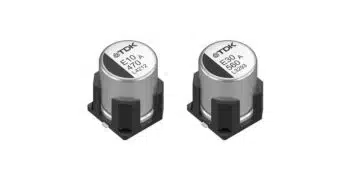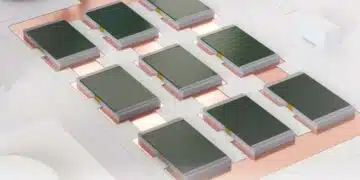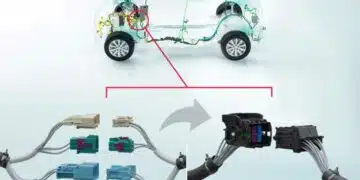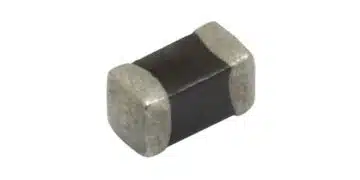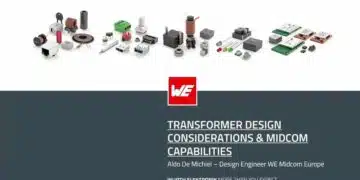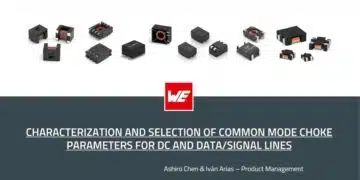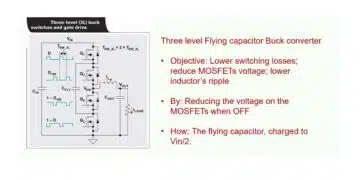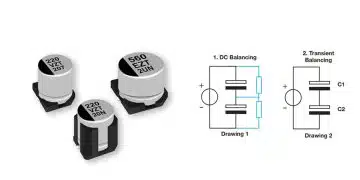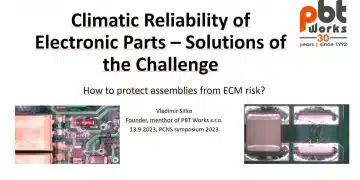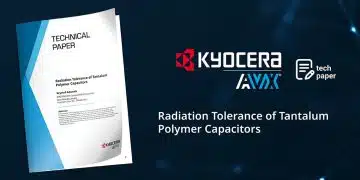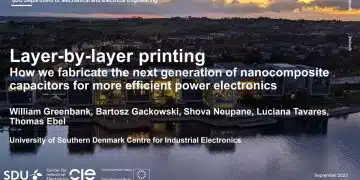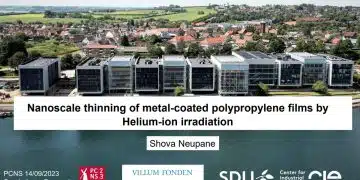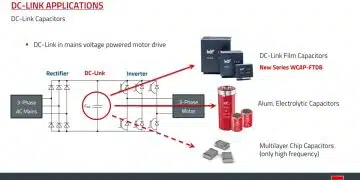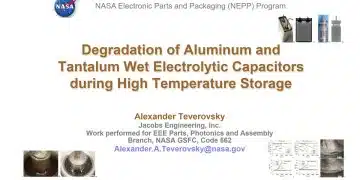Capacitors e-Blog
Aluminium Capacitors Series Connection Balancing
In the design of a capacitor bank, it is important to balance the capacitors for both DC and transient signal....
Read moreDetailsStable and Reliable Tantalum Supply
A stable, reliable, and responsible tantalum supply chain is critical to the supply of electronic components such as capacitors and...
Read moreDetailsClimatic Reliability of Electronic Components
The paper compares two ways to increase the robustness of assembly against ECM electrochemical migration. In the paper, we underline...
Read moreDetailsRadiation Tolerance of Tantalum Polymer Capacitors
This article written by Krystof Adamek, KYOCERA-AVX Corporation explore radiation tolerance of tantalum polymer capacitors. Environments rich in ionizing radiation create a...
Read moreDetailsLayer-by-Layer Printing of Nanocomposite Capacitors
This paper explains layer-by-layer fabrication method, where nanocomposite dielectrics are printed by successive depositions of ultra-thin layers of a room-temperature-stable...
Read moreDetailsNanoscale Thinning of Polypropylene Dielectric Films by Helium-ion Irradiation
This article presents a method for thickness reduction of polypropylene (PP) films, used as dielectric materials for film capacitors, by...
Read moreDetailsDC-Link Film Capacitors for DC-Charger Applications; WE Webinar
This Würth Elektronik webinar provides overview of high-power density DC-link film capacitors for DC-charge applications in EVs or industrial power...
Read moreDetailsMLCC Capacitors Benefits in GaN Defense Power Supplies
This post by Knowles Precision Devices blog describes how ceramic capacitors have inherent properties that align well with the requirements...
Read moreDetailsDegradation of Aluminum and Tantalum Wet Electrolytic Capacitors during High Temperature Storage
This paper explores degradation of electrical parameters in different types of aluminum capacitors and tantalum hermetically sealed capacitors during long-term...
Read moreDetailsHigh Energy Density NanoLam Capacitors for Use in Spacecraft Power Processing Units
This paper studies NanoLamTM film capacitors' performance of key dielectric parameters as a function of temperature in the range of -196oC...
Read moreDetails



